Acne Scar Reduction in Virginia, Washington D.C. and Maryland.
Acne scars can leave lasting marks on your skin and confidence. At The Naderi Center in Virginia, our skilled providers offer Acne Scar Reduction treatments that smooth and refine your complexion. The result is clearer skin and renewed self-assurance.
Embark on a journey of aesthetic excellence with The Naderi Center. Experience unparalleled artistry and precision for transformative beauty.
Acne Scar Reduction Benefits Await You
Restored Confidence
Boost your self-esteem with a smoother, scar-free complexion, and face the world without holding back.
Enhanced Appearance
Elevate your looks by eliminating the blemishes that distract from your natural beauty.
Healthier Skin
Improve your skin's texture and resilience, setting the foundation for an improved skincare routine and lifelong skin health.
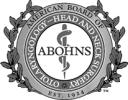


What is Acne Scars
Acne scars are the result of the skin’s healing process after acne lesions, leading to permanent textural changes and indentations. Acne scars reach deeper than the skin, impacting one’s appearance, self-confidence, and self-esteem. There are many options to remove or reduce the appearance of acne scars and reveal your beautiful skin, including dermabrasion, chemical peels, laser procedures, and surgery. Laser resurfacing repairs skin damage, reduces wrinkles, fine lines, and lessens the severity of skin irregularities like acne scars, blemishes, enlarged pores, and uneven skin tone. Dermabrasion and chemical peels resurface your skin for a natural, rejuvenated, refreshed appearance. For some patients, scar revision surgery may be the best solution. There are even less invasive things that can be done such as microneedling and using medical grade skincare products.
What are the different types of acne scarring?
Ice Pick Scar
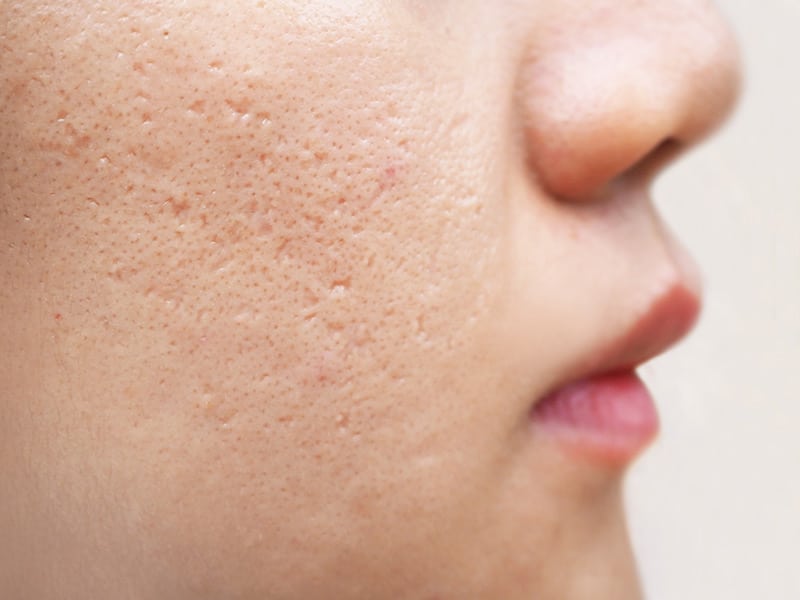
Ice pick scars are the most difficult kind of acne scars to treat. This is because they are deep and narrow divots, resembling tiny column-like punctures, making them hard to fill and/or exfoliate away. These scars are usually the result of having severe cystic acne in the deeper layers of the skin. Although ice pick scars may not completely go away, medical grade skincare therapies can improve and decrease the appearance of scars.
Boxcar Scar

Rolling Scar

Hypertrophic Scar
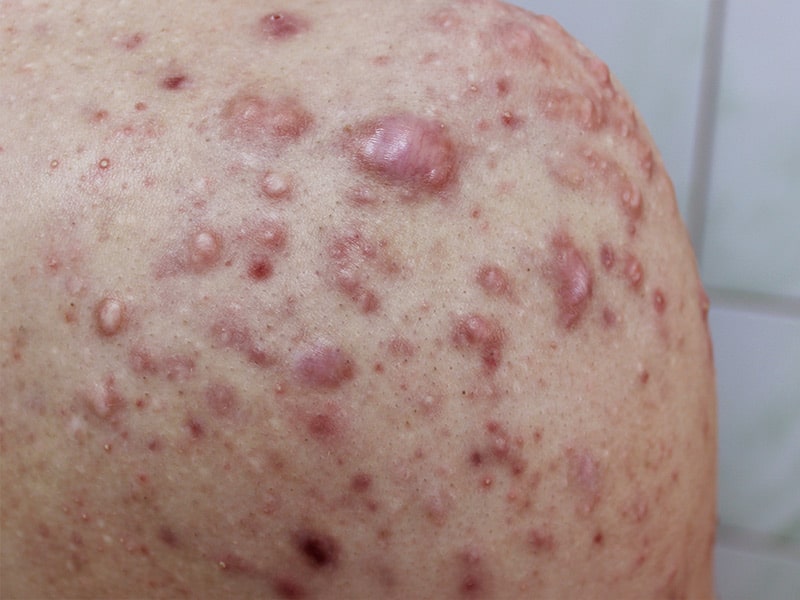
Why do Acne Scars form?
Mismanagement and lack of prevention of severe acne breakouts is the main cause of acne scarring. Unlike small whiteheads or blackheads, it is deep papules, nodules, and cysts that create true scars in the skin. Skin tone is another factor that leads to either more or less acne scarring. Individuals with darker skin tones, Fitz-Patrick skin type 4 and higher are more likely to have scarring and hyperpigmentation issues after suffering from cystic acne.
The propensity to scar after acne is attributed to having more active melanin and fibroblast cells in the skin. Fibroblasts stimulate the production of collagen in the skin. When fibroblasts are more active, as in people with darker complexions, there is an over production of collagen and tissue in response to acne breakouts which then becomes a scar.
Acne Scars Before & After photos
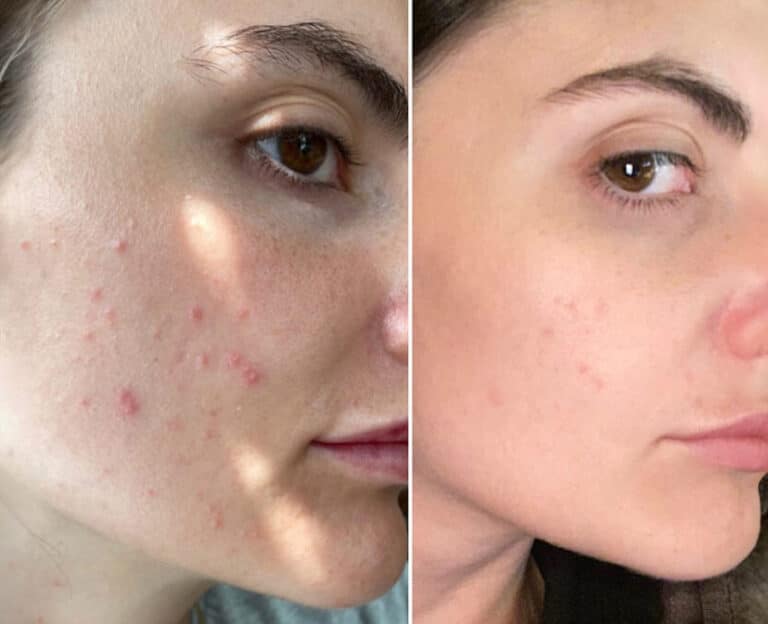
Is it an acne scar or an acne mark?
Some people have a misunderstanding about the difference between an acne scar and an acne mark. Acne marks are surface level pigmentation changes in the skin that are left behind after a breakout. If the skin is neither depressed nor raised and only a dark or red coloration is noticeable, it is an acne mark. Acne marks usually resolve or improve in appearance after a few months without any treatment. The medical treatment for acne marks is very different than acne scars.
A true acne scar changes the smoothness and texture of the skin, either creating an indention or lump in the skin layers. Severe texture irregularities signify deep-set damage that needs aggressive treatment. True acne scars require more drastic and invasive medical management in order to improve. Management of acne scars can include an aggressive medical grade skincare regiment, laser modalities, dermabrasion, microneedling, and other means of resurfacing. Acne scar treatment options also depend on the patient’s skin type, thus, it is important to consult a physician to determine the best treatment plan. With patience and commitment to a skincare regimen one can improve acne scarring.
What are the different types of acne marks?
Acne breakouts can cause a discoloration of the skin; red, brown, or even white pigmentation marks are a common marker of a history of acne breakouts. The different types of post-acne discoloration include hyperpigmentation, hypo-pigmentation, and erythema.
Hyperpigmentation
Hyperpigmentation is characterized by areas of uneven skin pigmentation. The skin cells damaged from an acne breakout overproduce melanin, which causes spots or patches of darker skin tone. These brown discolorations can be frustrating to deal with, but there are treatment options. At The Naderi Center, we provide our patients with laser and light treatments as well as various skincare regiments to help treat hyperpigmentation. Hydroquinone is a topical skin-lightening medication that may be used to reduce the appearance of dark spots. Topical derivatives of Vitamin A, such as Retinols, Tretinoins, and Retinoids promote sloughing off of the top layers of the skin and help to reduce the appearance of hyperpigmentation. These topical medications increase cell turnover, which in turn increases the production of new, healthy, and unpigmented skin cells.
Hypo-pigmentation
Hypo-pigmentation is when there is a lack of skin color due to the depletion of melanin in certain areas of the skin. Melanocytes, which are responsible for melanin production, get damaged or have lost the ability to produce melanin. Lack of melanin production results in uneven light spots in the skin. Vitiligo is a skin condition in which large areas of the skin have lost their ability to produce pigment. When hypo-pigmentation is present it is difficult to fully correct and completely even out the skin tone, although improvements can be made with chemical peels and laser resurfacing treatments.
Erythema
Erythema, or patches of redness can occur after acne has healed. Erythema is caused when small blood vessels, known as capillaries, dilate underneath the skin. Acne induces injury to skin and this can potentially stimulate dilation of the capillaries. Treatments for erythema may include a prescription topical medication to help restrict capillaries and shrink size as impulse light phototherapy (IPL) treatments.

Emotional Stresses of Acne Scarring
Acne scarring is not only damaging to the skin, but can also be emotionally and/or socially damaging as well. It is one thing to have a severe acne breakout and know that once the acne is treated there will be clear skin, however for many patients this is not the case. Acne scars are a permanent marker of a history of suffering from acne.
Clinical studies have shown that those affected by acne scarring have documented lower self-confidence, social embarrassment, and unhappiness with their appearance. Moreover, patients with acne scarring can feel more anxious and self-conscious in social settings and public appearances. In many ways, acne scarring goes deeper than just simply the layers of the skin. At The Naderi Center, we understand the toll that acne scarring can take on your self-esteem and will work with you to improve the appearance of your skin as well as your self-confidence.
Ideal Candidate for Acne Scar Reduction
- Have active acne that is not under control
- Suffer from acne scars or marks
- Have realistic expectations of results
- Understand that treatment of acne scarring may require multiple modalities as well as patience and commitment to a treatment regiment
Testimonial
“I cannot thank you enough, Dr. Naderi!!! You are an angel! God bless you and your hands! I am so grateful for everything you have done for me.”
Before acne scar treatment: 5 Steps to Reducing Acne
Step 1
Consistent use and commitment to an anti-acne skincare regimen
Make sure you are giving your skincare regimen enough time to actually see results. We often recommend staying with a new medical skincare regimen for at least 4-6 week to see an improvement in acne.
Step 2
Stop using oily or pore clogging products
Using the wrong makeup, cleanser, moisturizer, etc. for your personal skin type can lead to more acne breakouts. Use non-comedogenic skincare and cosmetic products that will not cause blockage of your pores.
Step 3
Do not sleep with make up on
This is a skincare MUST! Don’t go to sleep without washing your make up off. You may also find that you need to wash your face two times to ensure that you have cleaned your face thoroughly of any make-up.
Step 4
Do not pick at your acne
As tempting as it may be to pick at or pop active acne, it is important not to do so. Popping acne can spread infection under the skin, leading to more acne breakouts. Popping zits increases redness and the possibility of acne scarring. If acne is to be “popped” it should be done by a skin expert in a manner that is sterile and prevents spread of the pimples.
Step 5
Do not excessively clean the face
Keeping your face clean is an essential part of good skin health. This means washing your face twice a day, morning and night. Do not overdue it. You do not want to completely dry out your face. Drying out your face can lead to irritation that will cause further breakouts.
Medical Grade Skincare for Acne
ZO SkinHealth®
ZO SkinHealth® developed by the well renowned dermatologist Dr. Zein Obagi is a medical grade and protocol driven skincare line. ZO SkinHealth® is only offered at physician offices and is customizable based on the individual patient’s needs. ZO SkinHealth® offers an Acne Protocol that can significantly reduce the occurrence of breakouts, control oil production, decrease skin inflammation, and encourage the production of new and healthy skin cells.
One of the basic premises of ZO SkinHealth® is “getting skin ready.” The foundation to healthy skin is to make sure surface oil is removed using both physical as well as chemical measures. Cleanse, exfoliate, and tone are the introductory steps to getting your skin ready for a healthy change. With these simple steps, one can achieve noticeable improvements in acne breakouts, pigmentation changes, skin tone, and texture.
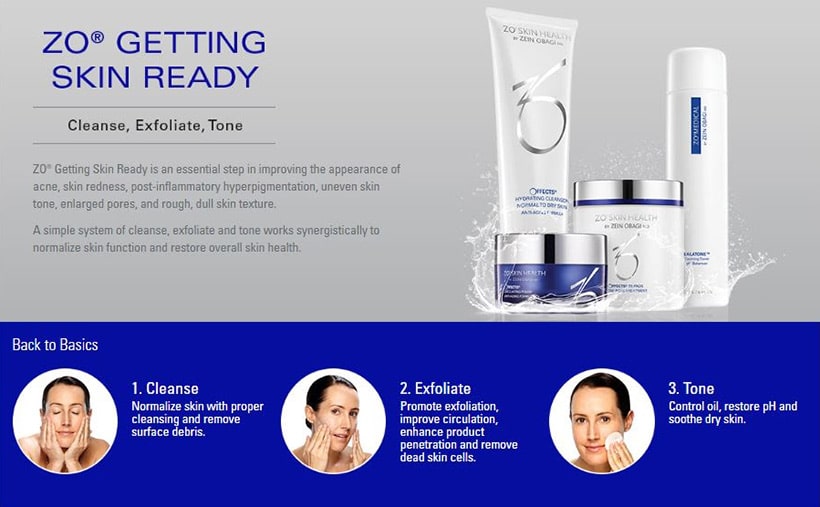
Step 1: Cleanse
A good cleanser is used to clean the skin of dirt, debris, and makeup. It is necessary to topically remove impurities that have built up on the face during normal daily activity. Cleansers should be used morning and night on a daily basis to keep the skin fresh, clean, and ready for product absorption.
ZO SkinHealth® offers three different cleansers so that patients can choose a cleanser that is ideal for their individual skin type.

Gentle Cleanser
Gentle Cleanser can be used for all skin types to remove unwanted debris and oils, while leaving the skin refreshed.

Exfoliating Cleanser
Exfoliating Cleanser is best for normal to oily skin types to help remove excess oils and debris, unclog pores, and calm irritated skin. This is typically recommended for acne prone skin.

Hydrating Cleanser
Hydrating Cleanser is best for normal to dry skin types to help rid the skin of debris and makeup while maintaining moisture within the skin.
Step 2: Exfoliate
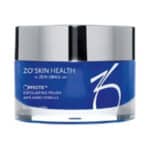
Exfoliating Polish
Exfoliating polish is good for all skin types and allows for a mechanical exfoliation of dead skin cells to reveal a more even skin tone.

Dual Action Scrub
Dual Action Scrub is best for patients with oily and acne prone skin to remove dead skin cells, excess oil, and unclog pores.
Step 3: Toner
Toner is a commonly overlooked step in the skin cleansing process, although it is essential. Using a toner balances the pH level of the skin in order to get optimal product absorption. If toner is not used, penetration of the concurrent products is not adequate for best results.

Complexion Renewal Pads
Complexion Renewal Pads are good for all skin types to control surface oils.
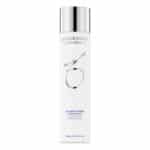
Calming Toner
Calming Toner is best for normal to dry skin types to remove impurities while repairing sensitive skin.
Step 4: Treatment
Ingredients in the treatment phase of acne prevention and elimination can cause reactions in the skin. Normal reactions to these treatments may include the skin becoming dry, itchy, flakey, irritated, etc. In order to achieve a positive change in your skin, a reaction must occur. The following products below will help get rid of dead skin cells and bacteria that cause inflammation and breakouts within the skin.

Aknetrol
Aknetrol is an acne fighting product that prevents future breakouts by controlling acne causing bacteria within the skin.

Glycogent
Glycogent is a glycolic and lactic acid product that assists in dead skin removal and oil control.

Sulfur Masque
Sulfur Masque is a 10% sulfur treatment that can be used on the full face or as a spot treatment to absorb excess oils and reduce appearance of pustules.
Epionce®
Epionce® is a botanical based physician-strength skin care line that also addresses acne prone skin. Epionce® is paraben, fragrance, sulfate, and gluten-free. While Epionce® acne treatment options do not contain harsh ingredients and are less aggressive, the products still deliver good acne management result.

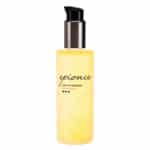
Lytic Gel Cleanser
Lytic Gel Cleanser removes dirt and debris from the skin while containing menthol that calms acne inflammation.
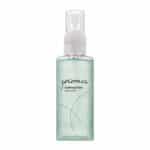
Purifying Toner
Purifying Toner removes stubborn impurities and excess shine while controlling factors that lead to acne breakouts.
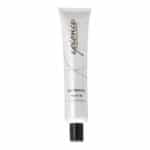
Lytic Sport Tx
Lytic Sport Tx is used after cleansing and toning to help smoothen skin texture and reduces redness associated with acne breakouts.
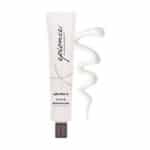
Lytic Plus Tx
Lytic Plus Tx is used after cleansing and toning to help smoothen skin roughness and aids in acne and hyperpigmentation reduction.

Purifying Spot Gel
Purifying Spot Gel is a spot treatment that helps clear active acne blemishes and control further acne breakouts.
Acne Scar Treatment Techniques
Before addressing acne scaring the first step is to make sure that a patient’s active acne is being treated. Reducing the onset of active acne breakouts is the first step in controlling acne related issues. Once breakouts are managed with a good medical grade skincare regimen, we can then work towards reducing the skin damage that has resulted from years of acne.
Surgery
Z-plasty is a plastic surgery technique that can make acne scars less noticeable by realigning the scar to fit into the natural skin folds or creases. Some patients are warry about replacing one scar with another. However, the new scar that is made with a Z-plasty procedure is precisely made for optimal camouflage in the skin. Z-plasty is a very common technique used for cosmetic scar revisions. Z-plasty may be followed by skin resurfacing procedures once the acne scar has healed to further lessen its appearance on the skin.
Dermabrasion
Dermabrasion is an abrasion technique performed either in a hospital setting or medical office, usually under general anesthesia or mild sedation. Dermabrasion is a special instrument that scrapes away the outer layers of skin. Dermabrasion allows a newer and smoother layer of skin to come to the surface. Recovery time is always dependent upon the abrasion depth. Redness, swelling, and general skin irritation are expected to occur after dermabrasion.
Dermal Fillers
Dermal fillers can give great improvement to wider based acne scars. Injecting a dermal filler will add volume to soften or reduce the appearance of the indented acne scar. Dermal filler injections is an optimal treatment for patients who want a quick fix with minimal downtime. It is well tolerated and very safe for patients. The results from this treatment are temporary, as dermal fillers are not permanent.
However, patients tend to notice continued improvement of results. Injection of dermal filler tends to break down scar tissue from the acne damage and promote new collagen in the area. The fillers will need to be re-injected every few months to maintain the result.
Steroid Injections
Intralesional corticosteroid injections are used for certain types of acne scars as well as deep cystic active acne. Steroids can be injected into hypertrophic or raised acne scars to help reduce their size and projection from the skin surface. Steroids are very effective in reducing redness, swelling, and soreness that may be associated with a deep cystic acne lesion. Injection of steroids into cystic acne can help to reduce its size and appearance. Even if the acne cyst is not completely eliminated, significant improvements will be made in the redness, size, and discomfort. Steroid injections are not used for tiny whiteheads or blackheads, but strictly used for deep large cystic.
Chemical Peels
Chemical peels are a very effective way to reduce the appearance of acne scars. A chemical peel is performed by topically applying a chemical solution to the face and acne affected areas. How aggressive the treatment is depends on the various strengths and types of chemicals being applied. Downtime also varies depending on the chemical reagents used for the peel. Deep chemical peels such as a phenol peel, have downtime of one to two weeks, whereas lighter glycolic peels have little or no downtime. After a chemical peel it is best to avoid and minimize any sun exposure in order to allow new skin to resurface without harm from UV rays.
What Chemical Peel is right for my skin and my scar reduction treatment?
TCA Peel
A Trichloroacetic acid peel, or TCA peel, is a chemical peel that targets the very top layers of the skin. A TCA peel dries up the uppermost to medium depth layers of the skin, causing epithelial layers of the skin to peel over the next couple of days to weeks. As with all peels, the higher the concentration of the TCA solution the deeper the peel and the better the results, however the patient’s downtime from recovery will also increase. TCA peels come in different concentrations and are often times mixed with other chemicals to optimize the result of the peel. TCA peels are often very effective for pigmentation that may have resulted from acne scarring or sun damage. Even with light TCA peels, it can be expected to have at least one week of peeling and another week or two of redness and irritation thereafter. The concentration of the TCA peel will depend on skin type, desired result, downtime available, and depth of acne scarring.
When the TCA peel is applied patients will expect to experience stinging and a hot sensation on the skin. Fanning helps minimize the heat and stinging sensation, making the process tolerable. It is normal for the skin to be red and feel tight for a few days following the procedure before peeling begins. It is important to keep sun exposure to a minimum during the healing process so that the new skin is not damaged.
Phenol Peel
A Phenol peel affects the deepest layers of the skin and is one of the most aggressive peels performed. Phenol peels are typically performed in the operating room under general anesthesia. The main ingredient found in phenol peels is carbolic acid, which has the ability to penetrate through multiple layers of the skin. Phenol peels yield dramatic skin transformations that can truly diminish the most severe cases of acne scarring. A dermatologist or plastic surgeon should only perform phenol peels as they are one of the most radical and aggressive peels available and in the wrong hands can cause complications.
After a phenol peel the patient will be swollen, red, and uncomfortable. Symptoms such as oozing and scabbing can be expected for a month or longer as the skin begins to heal and rejuvenate itself. Healing from a phenol peel is similar to healing from a severe sunburn and patients are recommended to take off one to two weeks for a full recovery at home. It is critical to stay out of the sun during the healing period after a phenol peel.
Phenol peels yield such drastic results from one treatment that they rarely need to be repeated at least for a number of years. Phenol peels rid the skin of acne scarring, hyperpigmentation, fine lines, and even deep set wrinkles. Side effects and risk from a phenol peel include permanent lightening/bleaching of the skin, permanent sunlight sensitivity, inability to tan, and possible scarring. Certain patients may or may not be good candidates for this treatment due to their skin type. Phenol peels may not be recommended for patients with darker complexions or freckles because of there will be a dramatic difference between the treated skin and the surrounding untreated areas (between face and neck).
VI Peel
A VI peel is a gentle chemical peel that is effective for all skin types experiencing hyperpigmentation, acne, acne scars, enlarged pores, and wrinkles. VI peels will smoothen the appearance of acne scars and improve overall skin quality. VI peels should be paired with other treatments in order to make a noticeable difference with acne scarring.
VI peels are performed in-office and take about 5 to 10 minutes to apply. This quick office procedure stimulates the skin to peel and reveals a smoother and clearer skin texture and tone. The downtime is minimal with this type of peel. It is expected to have an orange tint to the skin following the treatment due to the color of the product applied. It is also expected to experience a hot sensation on the skin, but fanning helps this sensation subside quickly. The peel is to remain on the treated skin for four hours. After four hours, the patient will then use the VI cleansing towelettes. Specific after care instructions and products will be given to you for the healing process. These products help stimulate further peeling and are crucial for optimal results.

Peeling after a VI peel starts about two to three days after the peel is applied. During this time, the skin is expected to be red, flakey, and itchy. The aftercare products help to calm the anticipated skin irritation that follows the treatment. It is important to strictly avoid the sun for at least 3-5 days while new skin is emerging. It is recommended to undergo a series of treatments spaced out every few weeks to months in order to see optimal results.
At the Naderi Center we offer the VI Peel as well as the VI Precision Peel. The VI Peel is great for patients with soft lines who want to restore an even skin tone and smoothen skin texture. The VI Precision Peel is a booster treatment to the basic VI Peel, offering a bit more skin brightening and lightening. Both types of VI peels are a great treatment and will show nice improvements after multiple treatments.
Glycolic Acid Peels
Glycolic acid has great exfoliating properties that allow layers of the skin to peel away and reveal a brighter and smoother layer of skin underneath. Glycolic acid has the ability to reduce the appearance of fine lines, wrinkles, hyperpigmentation, and even acne scarring. Glycolic acid peels come in different concentrations, ranging from 15% all the way up to 70%. As the concentration of glycolic acid increases, so does the depth of anticipated skin peeling. If a lighter concentration of glycolic acid is used, it is best to proceed with multiple sessions in order to achieve a significant improvement in the skin. An upside to the lighter peels is that downtime is little to none, allowing you to go back to work and resume normal activities right away. Glycolic acid peels are typically best for mild to moderate acne scarring.
AHA and BHA Peels/Facials
AHA (alpha hydroxyl acid) and BHA (beta hydroxy acid) peels both work in a similar fashion, but can benefit different types of patients. AHA and BHA work by disrupting the bonds between cells at the skin surface level. By disrupting intercellular skin bonds, the acids are able to promote shedding and exfoliation of the skin. AHAs are better suited for dry skin or sun damaged skin, while BHAs are better for more oily skin that may be prone to clogged pores or acne. AHAs, such as glycolic or lactic acids, are better for dry skin patients because they are water loving molecules that will work on the surface of the skin while also providing a skin moisturizing benefit. BHAs, on the other hand, are better for oily and acne prone patients because they are oil loving molecules that penetrate into clogged pores and deeper layers of the skin. As with most light peels, it is recommended to undergo a series of treatments to experience a noticeable improvement in the skin.
Blue Light Therapy
Blue light therapy is a great way to prevent acne breakouts. Blue light therapy utilizes the blue wavelengths of light to kill the acne causing bacteria on the skin, reduce skin inflammation, and smoothen the skin surface. Blue light therapy has zero downtime and should be performed every week for optimal results. Minimal discomfort is associated with the treatment and when blue light therapy is combined with a good acne prevention skincare regimen, patient’s can significantly reduce their acne.
Laser Resurfacing
Laser resurfacing employs either the carbon dioxide (CO2 laser) or the Erbium laser. The CO2 laser impacts the skin with intense energy wavelengths of light in order to peel away layers of damaged skin. Both CO2 laser and the Erbium laser should be performed with either local anesthesia or general anesthesia, as they are uncomfortable procedures to tolerate. Deep laser resurfacing treatments should be performed by an experienced medical professional who will tailor each treatment to the desired goals of the patient.
For patients seeking a gentler resurfacing option with minimal downtime, UltraClear® 3D Miracle Laser is also available.
Microneedling with Growth Factors
Microneedling is a procedure that stimulates the production of collagen and elastin within the skin. Microneedling uses a special pen that contains multiple small needles that induces numerous, controlled micro-injuries to the skin. In order to enhance and optimize the benefits achieved from microneedling, it is often combined with a topical application of growth factors. Growth Factor is derived using a patient’s own blood and is full of natural growth factors, which improve healing, and recovery after microneedling. Microneedling is ideal for all skin types and typically 3-6 sessions are recommended at 4-6 week intervals.
The Naderi Center offers professionals who can perform microneedling in Virginia using the Collagen P.I.N. The procedure is done in the office by our very own Board-Certified facial plastic surgeon, Dr. Jessica Kulak. Dr. Jessica Kulak has the ability to adjust the desired depth depending on what is best suited for each individual patient’s concerns. For more information on further benefits of microneedling, please visit our microneedling page.
Cost of Acne Scar Reduction
The Naderi Center takes a comprehensive approach to treating acne as well as acne scar reduction. After your consultation our staff and physicians will review pricing and help you find an effective treatment plan that also accommodates your budget.
Acne Scar Specialists at The Naderi Center
Board Certified facial plastic surgeon, Dr. Jessica Kulak, and Board Certified dermatologist, Dr. Alexandra Snodgrass are the acne scar specialists at The Naderi Center. During your consultation our physician specialists will discuss what treatment options that are most ideal for your acne scars. Our specialists take a multi-modal approach towards treating patients, using both at home medical skincare as well as in office procedures to improve your skin texture and tone.
To find out how you can improve the appearance of your acne scars, contact The Naderi Center to schedule a consultation. Contact the Northern Virginia office at 703-481-0002 or the Chevy Chase, Maryland office at 301-222-2020. Although The Naderi Center is conveniently located for patients throughout the Virginia, Maryland, and Washington D.C. area, we have many patients from across the United States who come to our surgeons because they know they are ultra-specialized in their area of cosmetic plastic surgery. Those outside of the immediate area may request a virtual consultation prior to their in office visit.

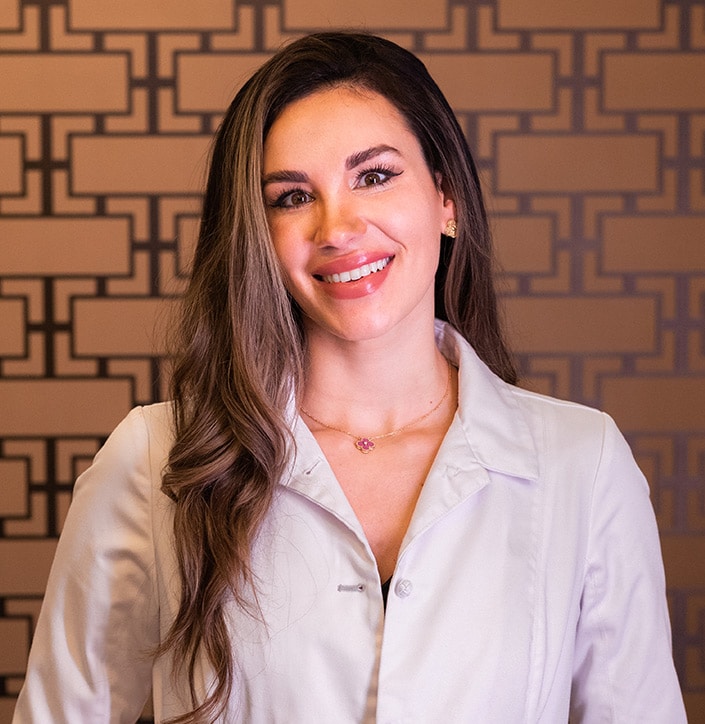
Acne Scarring FAQs
Can I completely get rid of my acne scars?
It is important to have realistic expectations when it comes to reducing acne scars. In severe cases of acne scarring, it is likely that full correction cannot be achieved. However, significant improvements can definitely be made with more aggressive treatments. The goal should never be perfection, rather it should be improvement.
What is the one best way to get rid of acne scars?
Unfortunately, there is no one answer to acne scarring. The best way to reduce acne scars depends on severity of scarring, skin type, finances, and downtime available. Treatment plans are individualized for each patient.
Will at home peels be enough to fix my acne scarring?
Acne scars are a very difficult skin issue to correct. While at-home peels and good skincare can help manage your breakouts and soften your skin tone, in order to achieve a true correction, more aggressive treatments are necessary. It is best to consult with a dermatologist or plastic surgeon to determine which options are best suited for you.
Will I hyper pigment from microneedling if I was told I would hyper pigment from laser treatments?
Unlike laser treatments, microneedling is a good acne scarring treatment for patients of all skin types and skin tones. If you have a darker skin complexion and have been told to stay away from laser treatments due to the risk of post inflammatory hyperpigmentation, then microneedling is a great alternative. Hyperpigmentation from microneedling treatments is very rare.
What can I expect after a laser treatment?
Generally after any laser treatment, you can expect to be red, irritated, and flakey. Depending on how aggressive the treatment is, you can expect a greater severity of these symptoms. The anticipated result of a laser treatment is for the top layers of the skin to slough off and reveal a fresh new layer of skin underneath. The more aggressive the treatment, the deeper the skin layers it affects resulting in more time required for recovery.
Should I only go to a dermatologist for acne scarring issues?
Dermatologists are specifically trained in diagnosing and treating skin conditions and are very helpful in designing treatment plans for active acne. However, board certified facial plastic surgeons are also certified and distinguished in advising skin conditions. Facial plastic surgeons aim to uphold overall facial aesthetics and skin health while also giving you a plan that will provide anti-aging benefits. Board certified facial plastic surgeons have plenty of treatments to offer for acne scarring and are a great choice to put you on the path to healthier, more beautiful skin.
Who treats acne scars at The Naderi Center?
Acne scar treatment is a collaborative effort between Dr. Jessica Kulak (facial plastic surgeon) and Dr. Alexandra Snodgrass (dermatologist). Together, they develop a multimodal treatment plan using skincare products and in-office procedures like microneedling, lasers, or chemical peels to improve texture and tone.
Will my scars just go away with time?
Acne scars usually do not just go away on their own. The only type of acne marks which fade with time are erythema, or post-inflammatory redness. However, post-inflammatory redness can develop into brown spots which is known as hyperpigmentation. Hyperpigmentation needs medical treatment to correct. Atrophic, or indented, acne scars must have treatment for improvement and will not subside over time.
What acne scar reduction office is near me?
If you live in the states of Virginia or Maryland, The Naderi Center for Plastic Surgery and Dermatology offers acne scar reduction among its services. For a full list of services, please visit our Locations page.